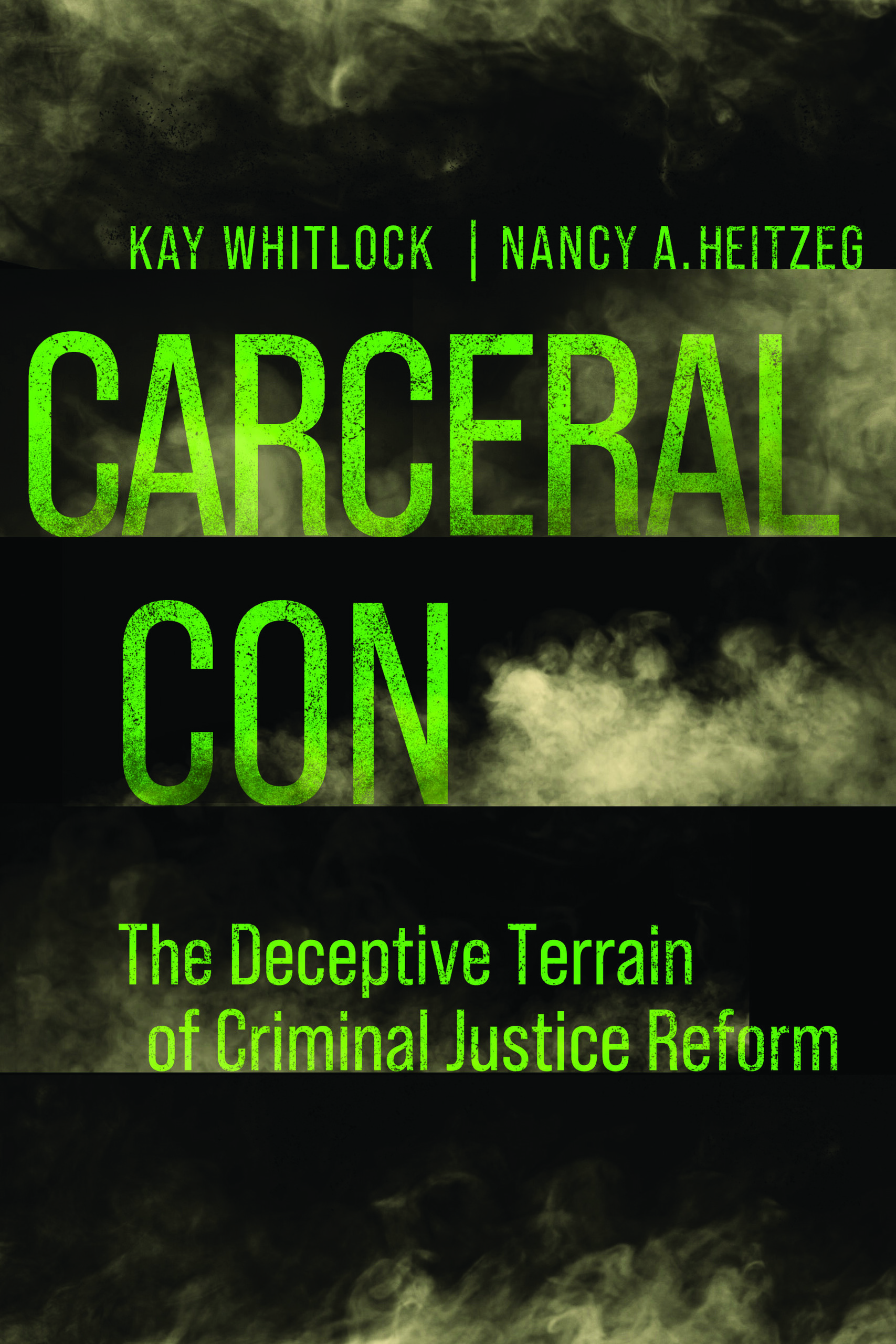Despite promises of a new and more dignified day for “justice-involved” people ensnarled in the carceral system, mainstream reforms remain centered around the management of a selectively defined caste of criminals and offenders, stigmatized and portrayed as the primary carriers of societal trouble, dangerousness, and violence. Historically resonant currents of anti-Black racism continue to define the concepts of criminality and danger in the public consciousness, and the racially coded meaning of the word “criminal” helps drive public support for expanded systems of control and surveillance. Yet this never produces more safety, only more violence.
The Crime/Non-crime Fallacy
It’s an uphill struggle to make that case when sensationalized images of “criminals” — the purportedly guilty, violent ones — are juxtaposed with the concept of “crime victims and survivors.” Indeed, the term crime itself serves as a distinct, if false, line of harm demarcation in the public consciousness and public policy. It selects the harm done by selectively policed and prosecuted individuals or small groups of individuals as the proper focus for the criminal legal system. This focus disappears violence, even massive violence, visited collectively on populations and communities by various state, corporate, and other civic actors. It separates the victims/survivors society is told to care about from those who can be abandoned with indifference. While this is seldom openly stated, the fine print in laws and reform initiatives, together with the results of their implementation provides the answers. The New York affiliate of Survived & Punished, a grassroots network that advocates for survivors of domestic and sexual violence, has posited that one of the central questions grassroot groups should ask in deciding how to respond to a proposed reform is whether it creates a division between “deserving” and “undeserving” people.” If it does, the reform will only reinforce this dishonest dichotomy.

It is equally important to take note of the imputation of “not crime” for even massively harmful, sometimes lethal, actions inflicted or authorized by people who slot into some mix of white, male, law enforcement, white-collar, corporate/business, or civic/political leadership statuses. This leaves intact the unspoken presumption that any criminalized person or population must have done something “to deserve” whatever harm comes their way. Their lives simply don’t count for much in the U.S. justice imaginary. But the more massive the violence done by so-called “respectable” actors, the less willing the U.S. justice system is to confront it. The result is the de facto legitimation of inequality and violence, legalized and extralegal, against anyone marked as “criminal” and “undeserving.” Political writer Joshua Leifer calls this “the logic of fracture.” He wrote about it in 2019 amid new global eruptions of anti-Semitic harassment and violence that resulted in a deluge of regressive calls for more policing and punishment.
The logic of fracture appears when the pain of victimhood leads to callousness or blindness to — or worse, pleasure in — the pain of others who are coded as adversaries; their humanity — their victimhood, too — is obscured by fear and suspicion… . The logic of fracture breaks society into hostile, frightened, mutually suspicious groups and sub-groups… . It turns people who share the same spaces — neighborhoods, buildings, buses, trains — as well as the same interests — affordable housing, clean streets, a living wage — into enemies.
Leifer emphasizes that processes of criminalization and policing inevitably result in “a kind of collective punishment of communities of color.” He encourages fighting back against violence with radical and compassionate solidarity strategies in which people act not only for their own survival and well-being, but also for all others whose lives and safety are endangered. This requires strategies of practical solidarity, which provide tangible and material forms of assistance and support even as they work to dismantle structural violence — rather than strategies of conditional charity, which do not. And to do that, it is necessary to deconstruct what the sociologist Everett C. Hughes described as “group fictions.” Group fictions are embedded in comforting but false storylines that locate intrinsic violence and danger in targeted people or communities even as they attribute inherent virtue to others, including law enforcement authorities and their private proxies, who routinely use violence to protect the wealthy and enforce their will. A group fiction, said Everett, is “collective unwillingness to know unpleasant facts.”
Group fictions begin to fall apart when individuals and communities ask deeper questions without resorting to rhetorical shorthand: Who actually perpetrates violence? What kinds of violence? Who suffers from its harms? How? How can these harms best be repaired? How can people who suffer harm be safe? How can the harm be addressed in ways that call for accountability without inflicting more violence on anyone? These larger questions open up the personal and social space necessary for caring about the harms done to individuals, communities, and entire populations without subjecting any of them to a worthiness triage.
The U.S. legal system does not recognize this complexity, and the bipartisan consensus frames “victim” narrowly. “When people dismiss abolitionists for not caring about victims or safety,” says Derecka Purnell, a human rights lawyer, writer, and organizer, “they tend to forget that we are those victims, those survivors of violence.” She writes of growing up in a neighborhood permeated with environmental toxins, low-waged jobs, and joblessness, where the first shooting she witnessed, at age 13, was by a uniformed security guard who stormed into a neighborhood recreation center, drew his weapon, and shot a young boy — his own cousin — in the arm. “My sister and I hid in the locker room for hours afterward,” Purnell wrote. “The guard was back at work the following week.”
For decades, abolitionists educated about, developed, and shared resources, methodologies, cultural work, and ideas regarding justice practices that speak more expansively to “harm” than to “crime.” They continue to offer and expand educational and organizing resources on their websites and through social media. An essential part of the struggle, they all emphasize, is transforming the social, political, and economic conditions that give rise to violence, including the structural violence of policing, prosecution, and punishment. A growing number of abolitionist organizations, publications, and websites offer a plethora of resources for organizing, interrupting, and repairing harm (to the extent possible) at the nexus of interpersonal, vigilante, and state/structural violence — and for transformative shifts in social and economic priorities.
The Perils of Reformist Reforms
The task of making choices to reduce as much harm as possible without increasing carceral reach can be difficult, especially when every proffered reform is typically couched in the uplifting rhetoric of smaller, smarter, less expensive, humane, fairer. A first step toward starting to unravel carceral reach is to gain clarity about reforms that may help to reduce harm without pouring more resources into or expanding policing/punishment systems (“non-reform” reforms) — and also about reforms that, even under the promise of shrinking incarceration, actually expand those systems.
In 2014, commenting on police reforms, Mariame Kaba — an organizer, educator, and curator whose work focuses on ending violence, dismantling the prison-industrial complex, transformative justice, and supporting youth leadership development — summarized some of both kinds. Among the kinds of reforms that should always be opposed, she says, are those that allocate more money, resources, and staffing to law enforcement agencies, and those that under the guise of such euphemisms as “community policing” actually expand police presence. Reforms that promise technologies to make policing more fair and less lethal should also be opposed; those technologies, Kaba said, would likely be turned against the public in repressive ways. Among the “non-reform” reforms that should be supported are measures to offer reparations to victims of police violence and their families, disarm the police, and more.
The abolitionist current runs deep; it does not simply seek to shift the power to harshly sentence, incarcerate, and surveil from elites to those who oppose them. It does, however, seek to shift power by dismantling structural inequality and violence. In 2020, as the uprising gained strength across the United States, young organizers created a vibrant, online #8toAbolition campaign that encapsulated essential demands in eight points, provided graphics (in different translations), and resource links so that people can learn more about abolition, mutual aid, and community-led models of building safety and collective care.
Excerpted from Carceral Con: The Deceptive Terrain of Criminal Justice Reform by Kay Whitlock and Nancy A. Heitzeg, published by the University of California Press. © 2021 by Kay Whitlock and Nancy A. Heitzeg.
Image: Unsplash


